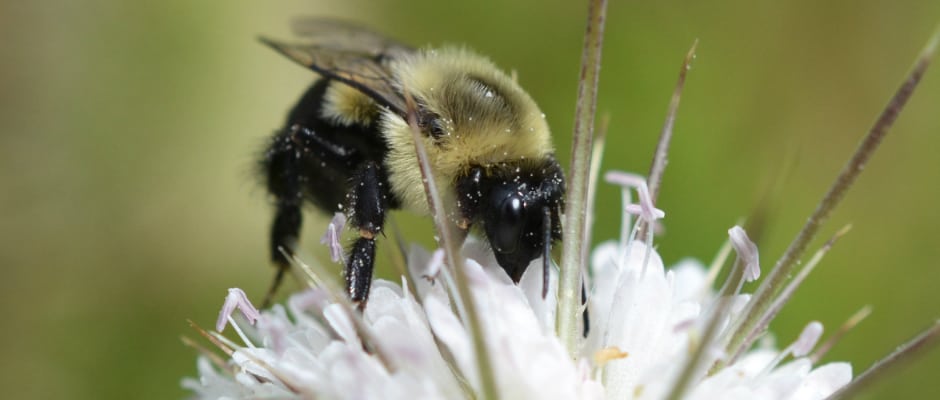Share this article
Bee Soup: A Delicious New Method to Study Populations
Determining bee population numbers is as challenging as determining stock market trends, according to Douglas Yu, an associate professor at the University of East Anglia in the United Kingdom and the senior author of a new study published in the journal Methods of Ecology and Evolution that might change the way bee populations are monitored in the future.
“When you watch the stock market, it might be on a long term downward or upward trend,” Yu said. “But on any given week, it could go all over the place.” As a result, according to Yu, it takes a long time to actually see a trend, especially since stock market forecasts can be overly focused on the ups and downs of individual companies rather than on the market as a whole. Similarly, counting and studying individual bee species provides only fragmentary evidence for the overall decline of the bees. “But it’s enough to be worried,” Yu said.
Rather than examining individual bees under a microscope — the method now used to identify bee species — Yu and his team of researchers from China and the U.K. trapped bees in pan-traps, — colorful plastic bowls filled with soapy water — melted the DNA out of the bees, ran the resulting “bee soup” that looks a bit like a gray gazpacho, according to Yu, through a DNA sequencer, and used a computer to sift through the DNA sequences and look for mitochondrial DNA.
Mitochondrial DNA is unique to each species, Yu said. “These are the little energy factories inside cells that amazingly have their own DNA,” he said. After comparing the DNA sequences with a reference database of mitochondrial genomes, one for each species of bee, he and his team were able to determine which bee species were present in each bee soup.
According to Yu, this process can take just a few months rather than the years that would normally be used to identify bees by their morphology. “Computers and sequencers are fast and can take every bee from the United States, read the mitochondria genomes, and make this reference list of mitochondria genomes,” he said. Further, reading a soup process can provide an estimate of the biomass of each sample, which Yu said, is a bit like counting the bees. For example, if the researchers find only a few DNA sequences of a particular species of bumblebee, that sample should have only one or two individuals of that species. “When there are fewer and fewer reads and fewer and fewer captures in your traps, you know they’re declining in numbers even if they haven’t disappeared yet,” he said.
What’s Killing Our Bees?
As bee populations continue to decline, the United States and the U.K. governments are considering establishing a monitoring program. In the U.S., such a program would require sampling 200 sites every other week in the first and fifth year, which would make up a total of 1.3 million insect specimens and is estimated to cost at least $2 million. Yu’s method could cut down on costs and time, and increase the reliability of the information, he said.
The monitoring program plans to track three measures of bee health: How many species are present in a given site, whether each species’ geographical range is expanding or contracting, and an idea of whether or not local populations are going up or down. According to Yu, the first two issues are particularly easy and require just detecting the presence and absence of species. The third can be estimated by tracking the number of trapping events per site, and combining that information with the biomass estimates in each trap. A further advantage of bee soup is what Yu calls “past-proofing.” For example, researchers can go into the DNA datasets to search for when a virus that might have been responsible for a decline in bee numbers was first introduced.
Bees are vital to the environment and important to other wildlife as well, since most plants that wildlife and humans consume are pollinated by something. And while bees are being studied, in the U.K. alone there are an estimated 1,500 total species of pollinating insects, such as moths and flies that, according to Yu, are still untracked and unknown. Yu hopes that this study provides a step in the right direction in order to monitor pollinator populations and later assist with conservation efforts.
“We have two needs going forward,” Yu said. “The first is to track things better. The second is to see if our remedies work and for which species.”
Header Image:
A common eastern bumblebee (Bombus Impatiens) pollinates a flower in Ellis Lake Wetlands in Fairfield, Ohio. In a new study, researchers from the U.K. and China found crushing up bees into a DNA “soup” and running the information through a computer database, is a feasible alternative to counting individual bees.
Image Credit: Andrew C via Flickr








